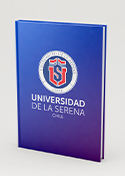Ciencias Naturales
Permanent URI for this community
Browse
Browsing Ciencias Naturales by Subject "CHEMICAL EVOLUTION"
A CO funnel in the Galactic centre: Molecular counterpart of the northern Galactic chimney
(ASTRONOMY & ASTROPHYSICS, 2023-06-27) Veena, V. S.; Riquelme, D.; Kim, W. J.; Menten, K. M.; Schilke, P.; Sormani, M. C.; Banda-Barragán, W. E.; Wyrowski, F.; Fuller, G. A.; Cheema, A.
We report the discovery of a velocity coherent, funnel-shaped (CO)-C-13 emission feature in the Galactic centre (GC) using data from the SEDIGISM survey. The molecular cloud appears as a low-velocity structure (V-LSR = [ - 3.5, + 3.5] km s(-1)) with an angular extent of 0.95 & DEG; x1 & DEG;, extending towards positive Galactic latitudes. The structure is offset from Sgr A* towards negative Galactic longitudes; it spatially and morphologically correlates well with the northern lobe of the 430 pc radio bubble, believed to be the radio counterpart of the multiwavelength GC chimney. Spectral line observations in the frequency range of 85-116 GHz have been carried out using the IRAM 30-m telescope towards 12 positions along the funnel-shaped emission. We examine the C-12/C-13 isotopic ratios using various molecules and their isotopologues. The mean C-12/C-13 isotope ratio (30.6 & PLUSMN; 2.9) is consistent with the structure located within inner 3 kpc of the Galaxy and possibly in the GC. The velocity of the molecular funnel is consistent with previous radio recombination line measurements of the northern lobe of radio bubble. Our multiwavelength analysis suggests that the funnel-shaped structure extending over 100 pc above the Galactic plane is the molecular counterpart of the northern GC chimney.
Spatially resolved chemodynamics of the starburst dwarf galaxy CGCG 007-025: evidence for recent accretion of metal-poor gas
(MONTHLY NOTICES OF THE ROYAL ASTRONOMICAL SOCIETY, 2023-04-21) del Valle-Espinosa, M. G.; Sánchez-Janssen, R.; Amorín, R.; Fernández, V.; Almeida, J. S.; Lorenzo, B. G.; Papaderos, P.
Nearby metal-poor starburst dwarf galaxies present a unique opportunity to probe the physics of high-density star formation with a detail and sensitivity unmatched by any observation of the high-z Universe. Here, we present the first results from a chemodynamical study of the nearby, gas-rich starburst dwarf CGCG 007-025. We use VLT/MUSE integral field spectroscopy to characterize the properties of the star-forming (SF) gas, from its metal content to its kinematics. The star formation rate (SFR) surface density presents a clumpy distribution, with the brightest knot hosting a 5 Myr young, Wolf-Rayet (WR) population (revealed by the presence of the characteristic 5808 angstrom WR bump). The ionized gas kinematics are dominated by disordered motions. A superposition of a narrow (sigma approximate to 30km s(-1)), intermediate (150 km s(-1)), and broad (1000 km s(-1)) kinematic components are needed to model the emission-line profiles in the brightest SF region, suggesting the presence of energetic outflows from massive stars. The gas-phase metallicity of the galaxy spans 0.6 dex and displays a strong anticorrelation with SFR surface density, dropping to 12 + log(O/H) = 7.7 in the central SF knot. The spatially resolved BPTs indicate the gas is being ionized purely by SF processes. Finally, the anticorrelation between the SFR and the gas metallicity points out to accretion of metal-poor gas as the origin of the recent off-centre starburst, in which the infalling material ignites the SF episode.
